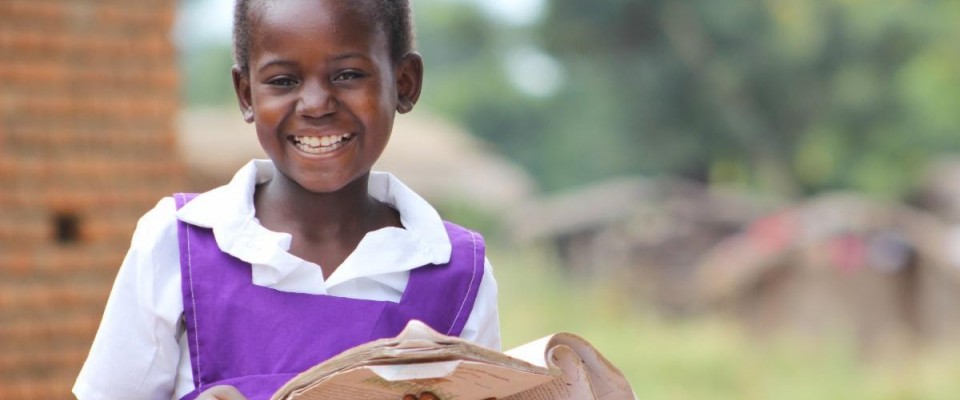-

Helping Countries to Solve Their Own Development Challenges
Speeches Shim
USAID is reorienting its strategies, partnership models, and program practices to achieve greater development outcomes and work toward a time when foreign assistance is no longer necessary. It’s called the Journey to Self-Reliance. As partners on this journey, USAID is working with host country governments and our partners to achieve locally-sustained results, helping countries mobilize public and private revenues, strengthening local capacities, and accelerating enterprise-driven development. This approach fosters stable, resilient, and prosperous countries that are more self-reliant, and prioritizes enduring partnerships. It is an approach that is good for our partner countries worldwide, U.S. national security, and the American taxpayer.
A Framework for the Future
USAID’s Policy Framework articulates how the Agency’s Journey to Self-Reliance approach directly contributes to the United States’ National Security Strategy and the Department of State and USAID Joint Strategic Plan. With its focus on fostering self-reliance, the Policy Framework presents a new vision for development and humanitarian assistance: building a country’s capacity to plan, finance, and implement solutions to local development challenges, and ensuring that there is a commitment to see these solutions through effectively, inclusively, and with accountability.
Country Roadmaps Help Assess Country Progress
To facilitate this shift, USAID is working to understand how self-reliant each of its partner countries is overall – as well as each country’s self-reliance strengths and challenges – and tailor its partnerships accordingly. The Journey to Self-Reliance Country Roadmap is USAID’s standardized analytical tool for measuring country progress across the dimensions of commitment and capacity based on 17 third party, publicly available metrics. The Journey to Self-Reliance Country Roadmap Portal includes Roadmaps for all low- and middle-income countries.
Operationalizing the
Journey to Self-Reliance
Integrating the goal of self-reliance into USAID’s strategic planning and programming processes supports cross-Agency efficiency and effectiveness - and ultimately, greater development outcomes.
Self-Reliance and the Program Cycle
The Program Cycle is USAID’s operational model for planning, delivering, assessing, and adapting development programming to achieve more effective and sustainable results. To make self-reliance move from theory to reality, Country Development Cooperation Strategies (CDCSs), regional plans, project and activity designs, monitoring and evaluation plans, and collaborating, learning, and adapting activities are all being re-oriented around the concept of self-reliance. Project and activity design and implementation follows priorities set out in the CDCS and integrates a number of successful approaches to self-reliance. Monitoring and evaluation play a key role in helping understand how best to help partner countries achieve self-reliance.
Building Knowledge: The Learning Agenda
The Self-Reliance Learning Agenda contributes to a broader understanding of self-reliance and aid effectiveness, and addresses critical knowledge gaps. The Learning Agenda generates, collects, synthesizes, disseminates evidence and learning, and facilitates their use to inform USAID’s efforts to support countries on their journeys to self-reliance.
Accelerating and Aligning Around the Concept of Self-Reliance
USAID strengthens the ability of partner countries to sustainably support their own development agendas through components that accelerate a country’s journey, and help align incentives around the goals of greater self-reliance:
- Financing Self-Reliance improves USAID partner countries’ abilities to finance their own economic and social development by promoting a comprehensive Agency approach to help countries mobilize public revenues and expend resources effectively, transparently, and with accountability, while creating the enabling conditions for private investment and functioning capital markets.
- Private Sector Engagement enables USAID and partner countries to collaborate with the private sector to co-create and co-design market-based and enterprise-led development approaches. Such approaches leverage markets, investments, firm behavior, and technical expertise to drive valuable business and development results in a sustainable manner over the short, medium and long term. Given the growing and vital role the private sector has in solving global development problems, private sector engagement is essential to building resilient and lasting self reliance.
- Redefining our Relationships with Partner Governments is an effort to rethink policies, program tools, and operational approaches that promote greater partner government commitment and capacity to lead their country’s Journey to Self-Reliance.
- Strategic Transitions happen when a country shows an advanced level of self-reliance, and USAID transitions its relationship to one that moves towards supporting a long-term economic, diplomatic, and security partner.
- USAID is also reimagining its partnerships and partnership models. The Agency’s Acquisition and Assistance Strategy outlines how USAID will embrace our new approach to self-reliance in procurement by outlining principles for partnering. Effective Partnering and Procurement Reform establishes more collaborative, adaptive, and diversified approaches in USAID policies, and new awards as a result. The New Partnerships Initiative helps to operationalize these principles, such as elevating local leadership, fostering creativity and innovation, and mobilizing resources across the Agency’s programs.

Comment
Make a general inquiry or suggest an improvement.